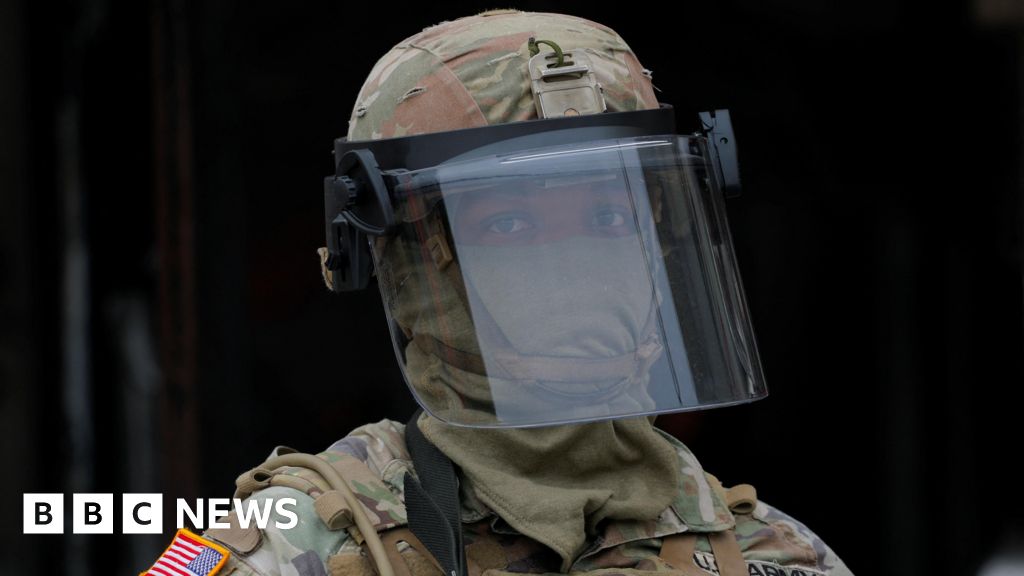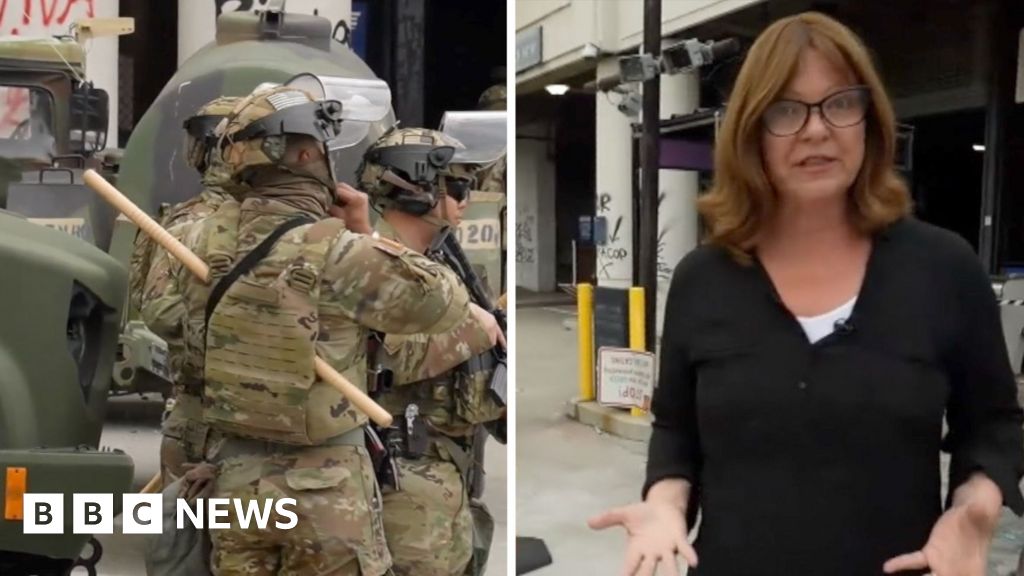ARTICLE AD BOX
Watch: What is the Title 42 border policy?
By Bernd Debusmann Jr.
BBC News
After more than three years, a Trump-era rule that allowed for the rapid expulsion of many illegal migrants is expiring.
With Title 42 ending, tens of thousands of migrants have surged to the US-Mexico border this week.
US President Joe Biden acknowledged "it's going to be chaotic for a little while" once the policy is lifted a minute before midnight on 11 May.
What is Title 42?
It dates back to a 1944 law known as the Public Health Act, which granted US authorities emergency powers to prevent the spread of diseases.
In March 2020, the Trump administration invoked the statute to stop the spread of Covid-19 across its borders.
With Title 42 in place, US authorities were able to swiftly expel migrants crossing the border from Mexico - including asylum seekers - using the pandemic as justification.
Some 2.8 million people have been expelled under Title 42 since it was implemented, according to US Customs and Border Protection.
Watch: Drone footage reveals border area in El Paso
Why is Title 42 ending?
After taking office in January 2021, Mr Biden and his administration kept the policy in place and continued to defend it as a public health measure for more than a year.
Citing a diminished public health risk, in April 2022 the US Centers for Disease Control - which oversees US health policy - signalled it would end the policy.
Republican-led states sought to keep the policy in place.
But with federally mandated Covid measures ending on 11 May, officials say the time is finally up for Title 42.
What's the situation on the border?
US officials have processed more than 10,000 arrivals at the border each day this week, up from about 5,000 in March.
Border facilities on Wednesday were holding some 28,000 migrants, far beyond their capacity, sources told Reuters news agency.
To cope with the influx, the Department of Homeland Security has stationed 24,000 more law enforcement officers and deployed 1,500 active-duty troops at the border.
It's not entirely unusual - the Pentagon has supported the Department of Homeland Security on the southern border for 18 of the last 22 years, and every year since 2006.
Mexico has also sent troops to its border with Central America to control the expected increase in migrants attempting to reach the US.
What comes after Title 42?
With Title 42 lifting, the Biden administration introduced new rules this week that would deny asylum to almost all migrants who cross illegally.
The strict measures would largely ban migrants who travelled through other countries on their way to the US-Mexico border from applying for asylum in the US, and those who fail to first apply online.
Illegal crossers will be deported, barred from re-entering the US for at least five years, and be "presumed ineligible for asylum", according to CBP. Under Title 42, there were no such consequences.
The Biden administration has also tried to create a number of pathways for legal immigration, in the hope of deterring migrants from crossing illegally.
Mexico has agreed to continue to accept 30,000 migrants per month from Cuba, Haiti, Nicaragua and Venezuela, as long as they come by air.
The US, for its part, has agreed to take up to a total of 100,000 people from Honduras, Guatemala and El Salvador who have family in the US.
The US plans to open new migrant processing centres in Colombia and Guatemala in a bid to help reduce undocumented immigration.
Title 42 and US politics
The issue of immigration is likely to play an important role in the 2024 presidential race, with many Americans expressing concern about the border and US immigration policy.
Former US President Donald Trump, who is and 2024 election contender, warned in a CNN town hall that the end of Title 42 would be "a day of infamy".
A Reuters/Ipsos poll this week, for example, found that a majority of respondents oppose allowing more immigrants into the country, including 34% of Democrats.
A Senate bill, backed by Arizona Independent Kyrsten Sinema and North Carolina Republican Thom Tillis, would allow for rapid expulsions in a manner similar to Title 42, but without the public-health justification.

 2 years ago
72
2 years ago
72








 English (US) ·
English (US) ·